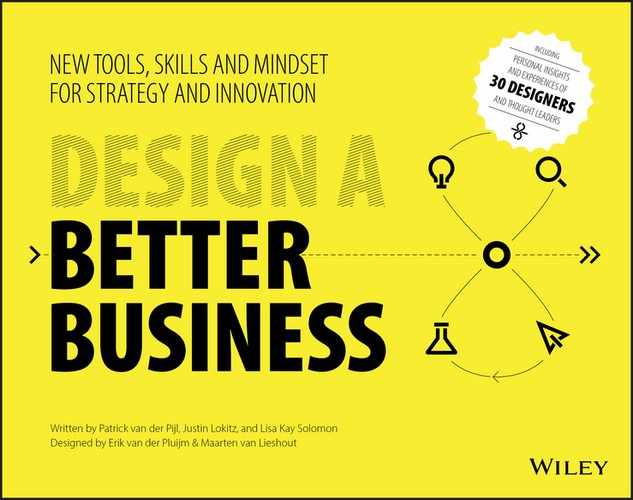Page 108
UNDERSTAND YOUR CONTEXT
It goes without saying that understanding the overarching context in which your company operates, such as who your competitors are and what trends you’re seeing, will deliver insights about how your business must change in the future. However, most companies don’t go far enough in this regard.
SIGNALS FROM THE FUTURE ARE ALL AROUND YOU
Trends and competitors will often only give you part of the picture. And, if you’re only following what your competitors are doing, you risk missing something really important. You need a contextual frame that goes beyond the competitive landscape.
Understanding your context will give you a clear picture of today’s trends as well as weak signals that will shape tomorrow. This kind of contextual assessment includes (at the very least) an understanding of market trends, technology trends, rules and regulations, economic climate, customer needs, competitors, and even uncertainties. It’s important to not think about these signals, trends, facts, and competitors only as they are connected to your current business. To really paint the picture you’ll need for the future, go wider than your business. Who are the nascent competitors, the up-and-comers too new to call competitors (yet)? What are you uncertain about that might affect your future context? Election results? Gas prices?
THE FUTURE IS ALREADY HERE. IT’S JUST NOT EVENLY DISTRIBUTED.
// Willam Gibson
Author and Essayist
THE BROADER CONTEXT
When Spotify hit the market, most people saw it as a direct challenge to the biggest competitor in the music industry at the time, Apple. Sure, this was part of the story. Apple helped to pave the way for most digital music companies. Though, if you look beyond Apple, what you’ll find is that Spotify’s founders also used their understanding of the broader context of the music industry to build a market-leading streaming music service. That context included cloud technology trends; customers’ desire to listen to music and not necessarily own it; a changing regulatory environment (that Apple helped to create); and an economic environment that had record labels scrambling for new revenue streams.
KEEP ON SCANNING
Context is not static. It changes on a daily basis – and by the minute in some industries. Continuous understanding requires continuous scanning. As you develop clear pictures of today’s context, you might also attempt to create a context for tomorrow, or five years from now, or perhaps even further out. What are the differences? What do you expect to change over time? And, as only time will tell which of your assumptions have been proven true or false, plan to update your understanding of context on a regular basis.
Page 109
VISITING THE FUTURE
Visiting the future is not as hard as you probably think it is. In fact, as stated earlier, signals from the future are all around us. Though it may sound odd, some of the places you might considering visiting when looking for signals from the future are modern art museums, hack-a-thons, and even Burning Man, the annual counter-cultural gathering held in the Nevada desert. No need to wait though. There are plenty of signals from the future right on your mobile device. Social networks and even Twitter are filled with signals you might find relevant to your context.
The key here is that your current context (and future context) is not going to be captured in a single report. Any report that sides with your strategy (or disagrees with it) will only be one point of view. And, by the time this information hits the Harvard Business Review, it’s likely that the context has already been established. It takes a team of people to map your context. Diversity will ensure that you have captured and assessed what are likely the most salient elements affecting your business today, as well as elements that may affect your business in the future. ![]()
Do not confuse understanding context with market research. Market research is invaluable to confirm or deny trends in a later stage of your journey. Understanding your current context serves primarily as a way to explore and weigh possibilities.
CURIOUS BY NATURE
I am a super-curious person. That’s why I love my job! I am a professional trend watcher. I help companies make sense of the world around them. The keys to my job are to observe and structure information continuously. Twitter is my go-to tool. Tweeting automatically structures the information in my mind. But tweeting is not enough: to uncover trends I look for a “through line” that connects several tweets based on their context. Once I discover what I believe to be a trend, I reach out to my network to validate.
To do this yourself, start with a point of view. Why do you need this information? Then, collect and structure new information. Everyone in your network has information, but it’s probably not organized. Explore the through lines with a framework for understanding. Look outside your industry. Find things you really have no clue about. Finally, frame the information. The frames you develop will reveal patterns and shifts or movements (e.g., from hierarchy to hub, from sending information to sharing information, etc.). This is a starting point for new ideas.

Farid Tabarki
Trend Watcher
Studio Zeitgeist
